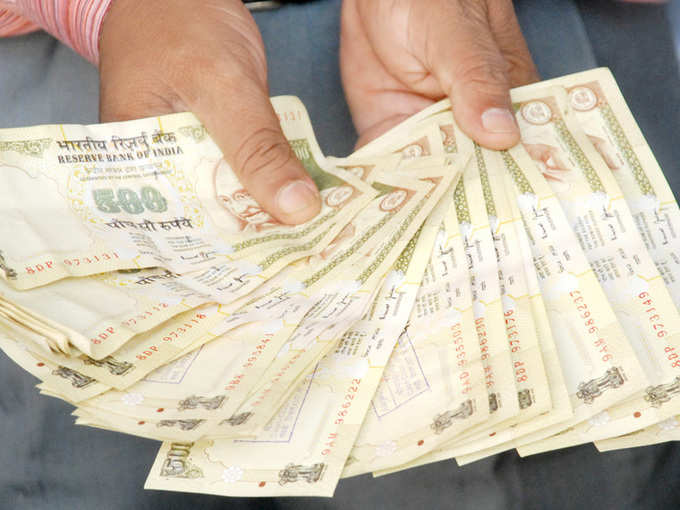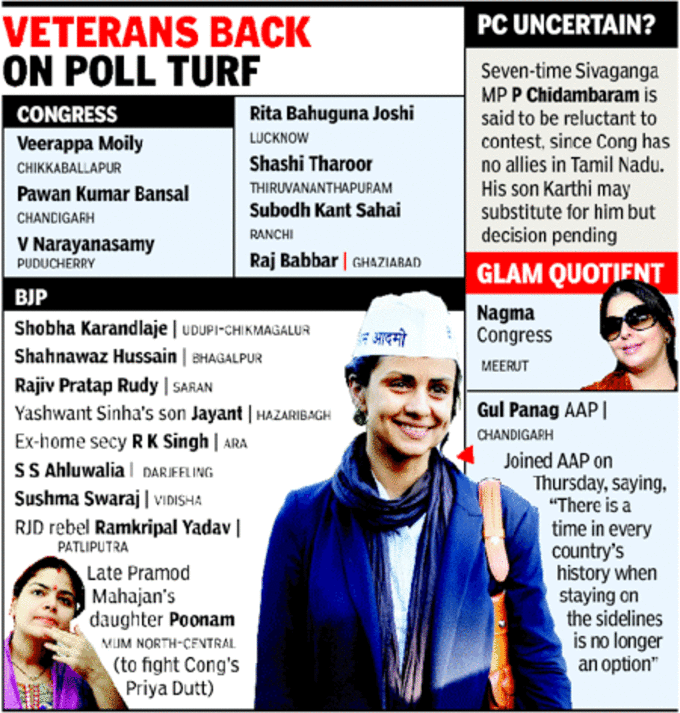 NEW DELHI: The country’s faltering
NEW DELHI: The country’s faltering The figure is comparable to the $4 billion (around Rs 20,000 crore at the prevailing exchange rate) additional spending that the government announced in 2008 to shield the economy from the impact of the global financial crisis. It is, however, less than the $7 billion raised and spent by political parties in the 2012 US presidential polls.
The election spend is often more effective than official economic stimuli as the money is actually spent — virtually without any transmission loss — in a short time. Moreover, there is a “trickle-down effect” as it often reaches the poorest voter.
This poll there will be a sharp increase in expenditure from the 2009 elections, when total spending was estimated at Rs 10,000-Rs 15,000 crore. Experts pointed out a large chunk of the spending by political parties and candidates is in cash, which makes it difficult to estimate the actual amount spent.
“Spending will increase significantly in these elections. The estimate is about Rs 30,000 crore,” said N Bhaskara Rao, chairman of the

He said the figure was based on an elaborate analysis undertaken by the think tank, which has been tracking various segments of elections since 1997.
The 2014 general elections come at a time when growth is estimated to have slowed to a decade’s low of 4.9% and the industrial sector is weighed down by the slowdown in global and domestic demand.
Several sectors of the economy, ranging from advertising, air charter services, security services, food and beverages, transport, liquor, fuel and automobiles are expected to see hefty activity, thanks to the sharp increase in spending.
“Election spending provides a very sizeable boost to the economy. Traditionally we have seen it adds 0.2-0.3% to growth,” said Pronob Sen, chairman of the National Statistical Commission.
“Liquor sales increase quite a bit during elections but nearly 80-90% of the consumers at that time are rural people who prefer country liquor, some of which is spurious too. Therefore it’s next to impossible to gather data that would show the real spike in the sales of liquor across the country during elections,” says Arvind Singhal, chairman & MD of market research firm Technopak.
The budget for the Indian advertising industry in 2014 is nearly Rs 34,500 Cr to Rs 38,000 Cr. “The general elections are touted to give it a boost of 8-10% this year, which amounts to around Rs 3,000 crore,” says Harish Bijoor, brand expert and
According to Bijoor, 45% of the total spend on political advertising will go into print, 38% will account for TV ad spends and the rest would go into outdoor and other forms of advertising.
Air charter services too have a busy season ahead. Industry experts say the hourly rates for jets and choppers can go up to Rs 5 lakh and Rs 3 lakh. Charter firms are seeking minimum contracts of three to four hours’ flying daily for 45 days. Estimates show that
“One finds evidence of a direct correlation between election spending and economic growth as over the last few election years, prices of
However, the impact on the automobile sector particularly SUVs (sports utility vehicles) has slowed over the years
“It is not the same as earlier. The code of conduct for elections is strict and candidates are careful about spending on vehicles, which is a big investment,” says Pravin Shah, CEO of Automotive Division of Mahindra & Mahindra, but added that elections do provide some growth.
The election spending also comes against the backdrop of the
Officially, the spending will only be a fraction of the amounts being talked about. In 2009, 8,070 candidates contested the polls. Assuming a similar number this time, and taking into account the expenditure ceiling for each candidate of Rs 70 lakh for the 2014 polls in most states, spending by candidates should officially be in the region of Rs 560 crore. In addition, government spending on general elections would add up to about Rs 1,000 crore.
Rao said a large chunk of the expenditure by political parties and candidates is likely to involve unaccounted money, which is used for what he described as “notes for votes”.
Government spending on polls is concentrated largely on activities such as voter awareness campaigns, labour, technology and other logistical aspects of conducting the elections.
The government’s expenditure per elector has gone up manifold, 20 times to be precise, from the first general elections to the 15th general elections, according to the
(With inputs from Saurabh Sinha, John Sarkar and Pankaj Doval in New Delhi)